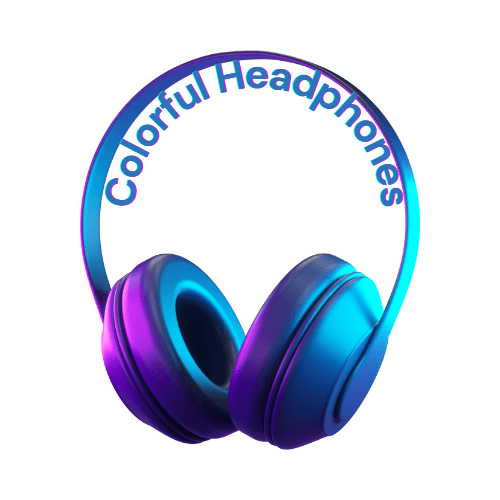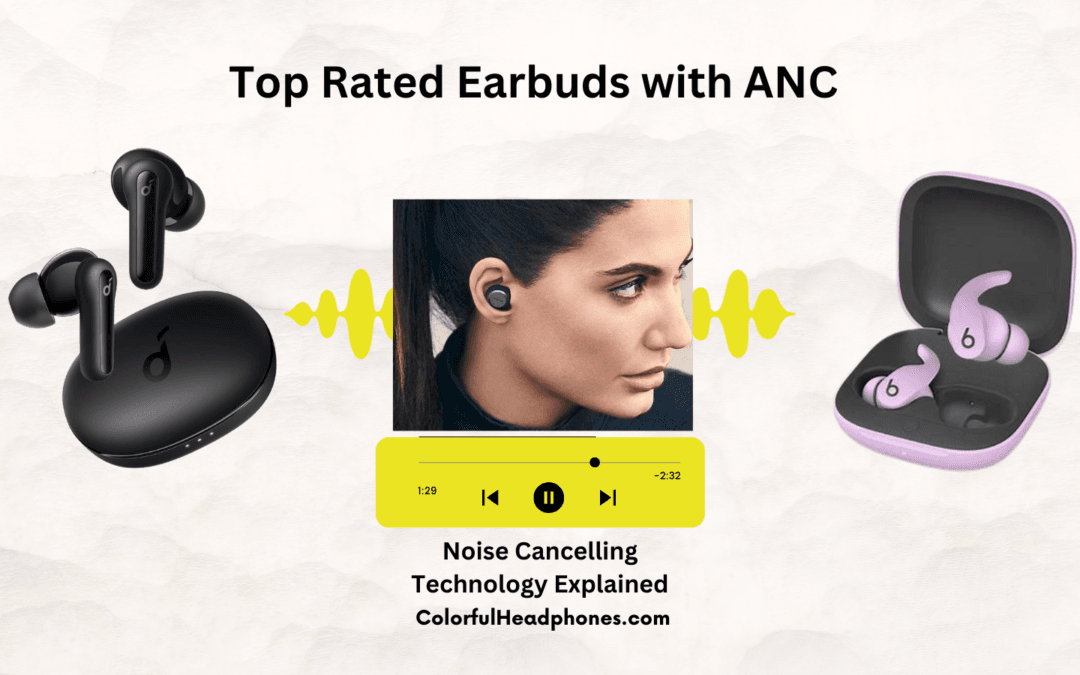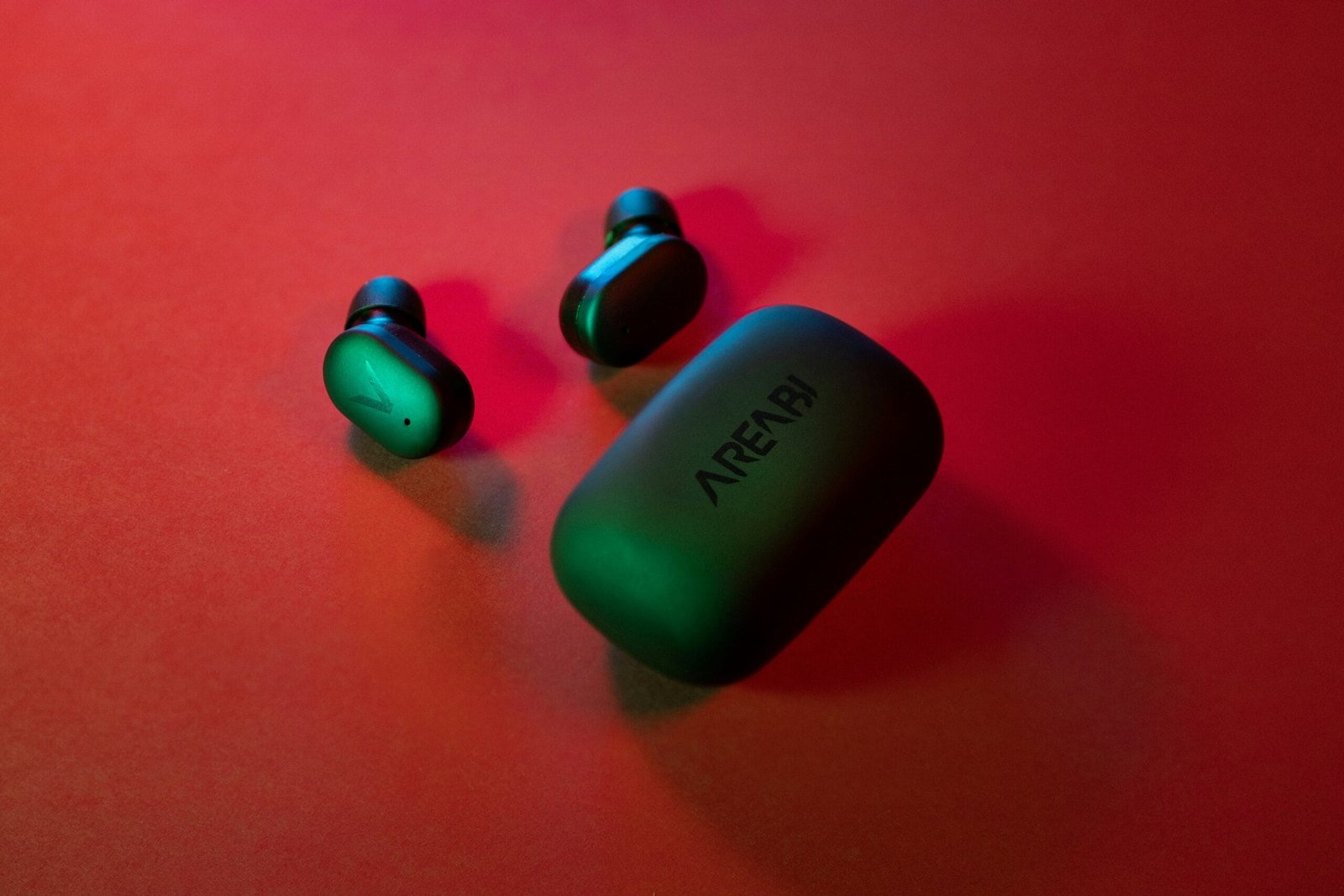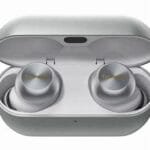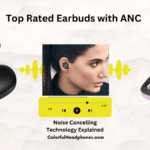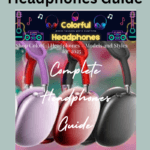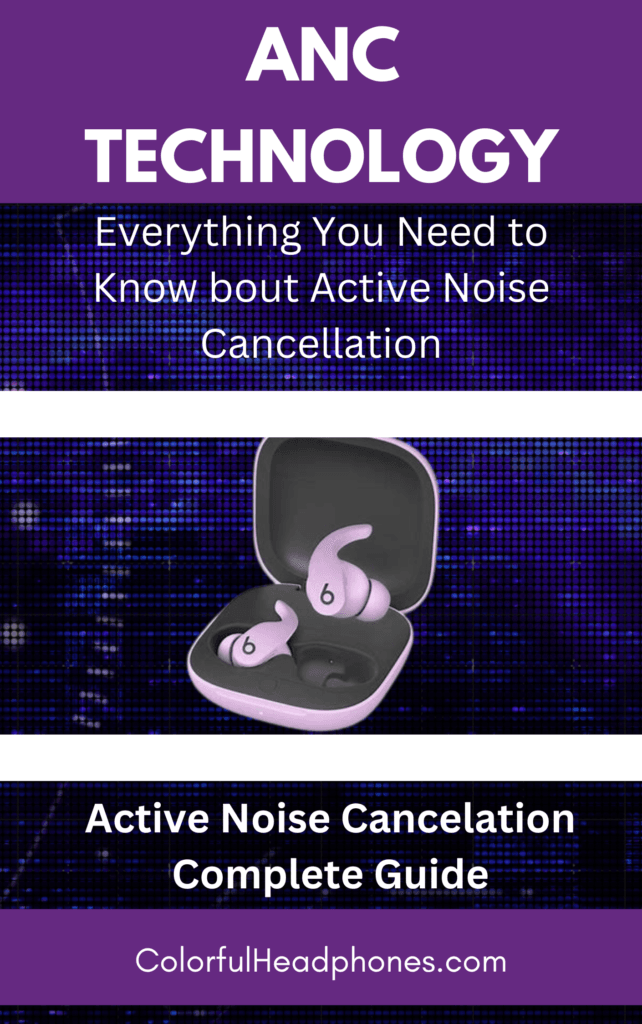Top Rated Earbuds Plus State-of-the-Art ANC Guide
In today’s fast-paced world, the need for peace and quiet has never been more essential. As we navigate through bustling city streets, crowded public transport, or busy workplaces, the demand for effective noise cancellation has led to remarkable advancements in audio technology. This blog post explores the top-rated earbuds that feature state-of-the-art noise cancellation technologies. We will delve into the intricacies of ANC (Active Noise Cancellation) technologies, examining how they work and why they are increasingly seen as the best noise cancelling headphones on the market. Whether you are a casual listener or an audiophile, understanding these innovations will empower you to make informed decisions when selecting the perfect pair of earbuds to enhance your listening experience.
Table of Contents
10.0 Top Rated
1
Top Rated Earbuds
- Reduce Noise By Up to 98%: Space A40 has an upgraded noise cancelling system to block out a wider range of distracting n…
- Automatically Tailored Noise Cancelling: Space A40 detects external noises and automatically selects a suitable level of…
- 50 Hours of Personal Space: That’s enough playtime to enjoy up to 1,000 songs or 25 movies. The earbuds have a 10-hour s…
Top Rated Earbuds #1 Pick – Soundcore by Anker Space A40 Auto-Adjustable Active Noise Cancelling Wireless Earbuds, Reduce Noise by Up to 98%, 50H Playtime
Listening Time: 10 hours
Charging Case: 40 hours added listening time
9.4
2
- Unmatched Distortion-Free Sound: Bluetooth 5.3 connection and 14.2 mm dynamic driver deliver Hi-Fi sound quality; X3 Pro…
- Earhooks for a Secure, Comfortable Fit: X3 Pro Bluetooth running earbuds feature an ergonomic ear hook design; Includes …
- 145H of Battery Life with Charging Case: X3 Pro wireless Bluetooth earbuds provide up to 9 hours on a single charge; Cha…
TREBLAB X3 Pro – Workout True Wireless Earbuds, Comfortable Earhooks, Bluetooth 5.3, Punchy Bass, Noise Isolation, 145H Playtim…
Listening Time: Up to 9 hours
Charging Case: 136 hours added listening time
Fit: Customizable with 3 tip sizes
Listening Modes: Noise cancelling
Audio Features: Balanced sound
9.1
3
- Custom acoustic platform delivers powerful, balanced sound
- Control your sound with two distinct listening modes: Active Noise Cancelling (ANC) and Transparency mode
- Three soft ear tip sizes for a stable and comfortable fit while ensuring an optimum acoustic seal
Beats Studio Buds – True Wireless Noise Cancelling Earbuds – Compatible with Apple & Android, Built-in Microphone, IPX4 Rating,…
Listening Time: 8 hours
Charging Case: 16 hours added listening time
Fit: Customizable with 3 tip sizes
Listening Modes: Active noise cancelling, adaptive transparency
Audio Features: Supports spatial audio
9.0
4
- REBUILT FOR COMFORT — AirPods 4 have been redesigned for exceptional all-day comfort and greater stability. With a refin…
- ACTIVE NOISE CANCELLATION — AirPods 4 with Active Noise Cancellation help reduce outside noise before it reaches your ea…
- HEAR THE WORLD AROUND YOU — The powerful H2 chip comes to AirPods 4. Adaptive Audio seamlessly blends ANC and Transparen…
Apple AirPods 4 Wireless Earbuds, Bluetooth Headphones, with Active Noise Cancellation, Adaptive Audio, Transparency Mode, Pers…
Listening Time: 6 hours
Charging Case: 24 hours added listening time
Fit: Universal
Listening Modes: Active noise cancelling
Audio Features: Personalized spatial audio
8.7
5
- 🎧 32 HOURS OF QUALITY SOUND | Fast Charge Technology: 1.5 hours of earbud battery from 10 minutes of case charging. The …
- 🎧 EROGNOMIC DESIGN | Ergonomically designed for supreme comfort, these earbuds offer a snug fit that feels natural, allo…
- 🎧 MULTIPOINT TECHNOLOGY | Experience seamless connectivity like never before with our earbuds equipped with multipoint c…
Raycon Everyday Earbuds (2024 Edition) – Bluetooth True Wireless in-Ear Buds with 32 Hours Playtime, Multpoint Technology, Extr…
Listening Time: 8 hours
Charging Case: 24 hours added listening time
Fit: Customizable with 3 tip sizes
Listening Modes: Active noise cancelling
Audio Features: Spatial audio
8.6
6
- JBL Deep Bass Sound: Get the most from your mixes with high-quality audio from secure, reliable earbuds with 8mm drivers…
- Comfortable fit: The ergonomic, stick-closed design of the JBL Vibe Beam fits so comfortably you may forget you’re weari…
- Up to 32 (8h + 24h) hours of battery life and speed charging: With 8 hours of battery life in the earbuds and 24 in the …
JBL Vibe Beam – True Wireless JBL Deep Bass Sound Earbuds, Bluetooth 5.2, Water & Dust Resistant, Hands-free call with VoiceAwa…
Listening Time: 8 hours
Charging Case: 24 hours added listening time
Fit: Universal
Listening Modes: Active noise cancelling
Audio Features: Bass focused
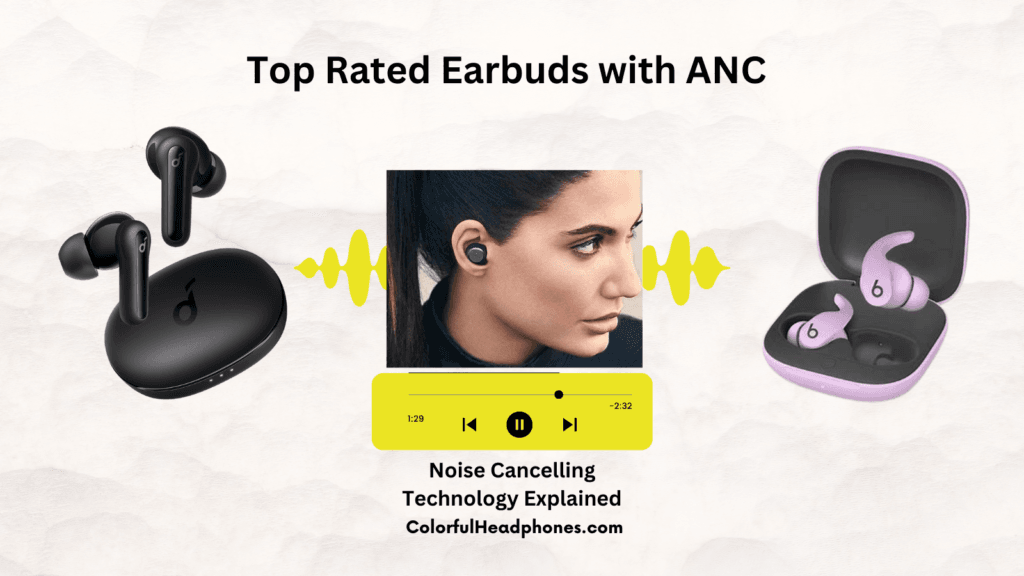
How does active noise canceling work?
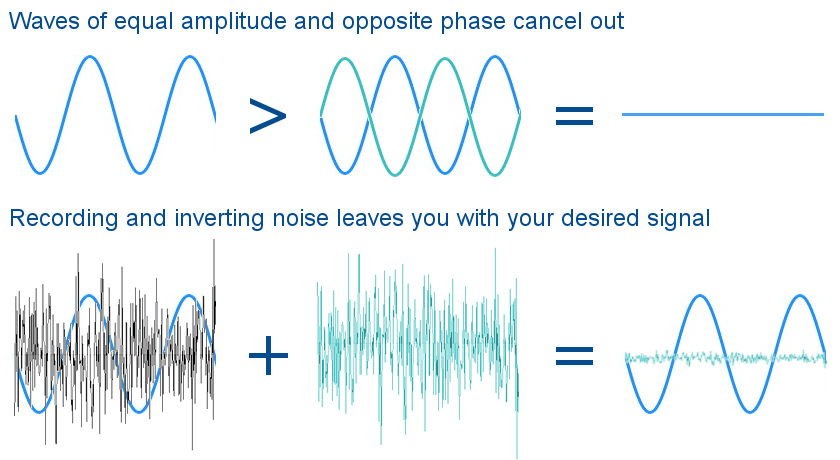
Understanding Active Noise Canceling (ANC) Technology: A Comprehensive Guide
Introduction to Active Noise Canceling (ANC) Technology
Active Noise Canceling (ANC) technology has become increasingly prevalent in an array of consumer audio devices, particularly those designed for personal listening experiences such as earbuds with noise cancellation. This technology allows users to minimize unwanted ambient sounds, enhancing their overall listening experience in diverse environments, from bustling urban areas to busy workplaces. The essence of ANC lies in its ability to actively counteract noise, using sound waves to negate disruptive sounds rather than merely blocking them.
At its core, ANC operates on a principle called destructive interference. This scientific process involves the generation of sound waves that are phase-inverted—essentially, they are inverted copies of the external noises. When these waves interact with the incoming sound waves, they cancel each other out, leading to a significant reduction in perceived noise. This is a crucial distinction from passive noise cancellation, which solely relies on physical barriers, such as ear tips or padding, to block out noise. While passive methods can be quite effective in certain environments, they often fall short in heavily populated or noisy settings.
In recent years, the demand for the best earbuds with ANC technology has surged, largely due to the increasing prevalence of noisy environments in daily life. Whether commuting on public transport or working in an open office space, the need for auditory clarity has never been more prominent. In this context, earbuds featuring noise cancellation technology offer substantial benefits, enhancing users’ ability to listen to their favorite music or podcasts without interruption from extraneous sounds.
As we explore the intricacies of Active Noise Canceling, we will delve deeper into its mechanisms, benefits, and applications, shedding light on how this innovative technology has transformed the listening experience and set the standard for modern audio solutions.
The Science Behind ANC
Active Noise Canceling (ANC) technology is grounded in the principles of sound waves and their interactions. To understand how ANC effectively reduces unwanted ambient noises, it is essential to delve into the concepts of sound waves and destructive interference. Sound is essentially a vibration that travels through a medium, producing waves that can be heard when they reach the ear. In various environments, these sound waves can create an aural landscape filled with unwanted noise, which can be particularly detrimental to user experiences while using earbuds with noise cancellation features.
ANC technology utilizes the principle of destructive interference to mitigate these unwanted sounds. This process involves generating a sound wave that is the exact opposite, or “anti-phase,” of the incoming noise. When these two waves—the original noise and the generated anti-noise—interact, they effectively cancel each other out, resulting in a reduction of perceived sound levels. This principle underlies the performance of many of the best earbuds with ANC technology on the market today.
While the physical principles of sound waves form the foundation of ANC, modern advancements have significantly enhanced its effectiveness through algorithms and digital signal processing (DSP). These technologies allow for real-time analysis of sound waves, enabling earbuds with noise cancellation capabilities to adapt to dynamic surroundings quickly. Through complex mathematical algorithms, the ANC system can continually assess external noise levels and adjust the anti-noise wave accordingly. This dynamic response to sound changes ensures a superior listening experience, making these devices ideal for travelers, commuters, and those seeking solitude in noisy environments.
Overall, the interplay of sound wave physics and sophisticated algorithms makes active noise canceling a remarkable technological achievement, providing users with significant auditory benefits.
Types of Active Noise Canceling Systems

Active noise canceling (ANC) technology has evolved significantly, leading to various types of systems designed for different environments and user preferences. The primary categories of ANC systems include feedforward, feedback, and hybrid systems, each with unique mechanisms, advantages, and situational effectiveness.
Feedforward ANC systems utilize external microphones placed outside the earbuds to detect ambient noise before it reaches the ear. By capturing sound waves in real time, these systems can generate an anti-noise signal that effectively cancels out the noise prior to entry. This type is particularly beneficial in environments with consistent, predictable noise, such as airplane cabins or train commutes. However, one disadvantage is that feedforward systems may struggle with sudden, impulse noises, limiting their efficacy in varying sound conditions.
Feedback ANC systems, on the other hand, work by using microphones inside the earbuds to monitor the sound that has already penetrated. They respond by creating an anti-noise wave that is tailored to the specific sound entering the ear. This makes feedback systems particularly effective in dynamic noise environments where external sounds may fluctuate, such as in crowded spaces. The drawback, however, can be a slight lag in response to sudden noise, which can affect overall performance.
Hybrid ANC systems combine the strengths of both feedforward and feedback technologies. By utilizing both external and internal microphones, these systems can adapt quickly to various sound conditions, providing superior noise cancellation. They are often found in the best earbuds with ANC technology, catering to users who seek versatility in different acoustic environments. While hybrid systems generally perform well across diverse scenarios, they may come at a higher price point due to their complexity.
Each type of ANC system has its own set of characteristics, making them suitable for specific contexts and user needs. Ultimately, choosing the right system will depend on the environment in which the earbuds with noise cancellation will be used, as well as personal listening preferences.
Components of ANC Technology
Active noise canceling (ANC) technology is a sophisticated system designed to reduce unwanted ambient sounds by using a combination of physical and electronic components. The primary elements that contribute to its functionality include microphones, speakers, and digital signal processors (DSPs). Each of these components plays a crucial role in offering the best earbuds with ANC technology, ensuring an immersive listening experience.
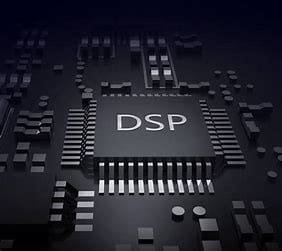
Microphones are integral to the functionality of ANC systems, as they detect external noise and capture sound waves from the environment. Typically, there are two types of microphones used in ANC earbuds: feedforward and feedback microphones. Feedforward microphones sense the outside noise before it enters the ear, while feedback microphones are placed inside the earcups to pick up sound within the ear. This dual-microphone setup enables the earbuds with noise cancellation to effectively analyze and counteract external noise.
Once the microphones capture the ambient noise, the digital signal processor (DSP) takes over. The DSP uses complex algorithms to analyze the incoming sound waves, producing a sound wave that is the exact inverse of the detected noise. This antiphase sound wave is then amplified and sent to the speakers, which emit the counteracting wave. The combination of these elements is essential for achieving optimal noise cancellation and makes significant advancements in technology possible.
Speakers, or drivers, are also indispensable components, as they convert the electrical signals from the DSP into audible sound. In earbuds with ANC technology, the quality of the drivers directly impacts sound performance, including bass response and clarity. Recent technological advancements have led to the development of more efficient and compact drivers, further enhancing the efficacy of ANC systems.
The collaboration of these components – microphones, DSPs, and speakers – forms the backbone of effective active noise canceling systems, enabling users to enjoy a better audio experience irrespective of their surroundings.
Applications of ANC Technology
Active Noise Canceling (ANC) technology has found a wide array of applications across different sectors, significantly enhancing user experiences in various environments. One of the most popular uses of this technology is in headphones, particularly in the best earbuds with ANC technology, which are designed to minimize unwanted ambient sounds. These earbuds utilize microphones to detect external noise, then produce sound waves that are the exact opposite of the detected noise, effectively canceling it out. Users benefit from a more immersive listening experience whether they are commuting, traveling, or simply enjoying music in a busy café.
Another prominent application of ANC technology is in earplugs, which are particularly beneficial in settings with consistent high levels of background noise. For instance, individuals working in manufacturing plants or operating heavy machinery often require earbuds with noise cancellation to safeguard their hearing. These specialized earplugs help reduce fatigue and distraction, allowing users to focus better on their tasks, thus improving productivity and safety in industrial environments.
- Lessen Loud Noises from Your Surroundings — This Bluetooth wireless headset uses cVc 8.0 Noise Reduction Technology to s…
- Listen All-Day With 30+ Hour Playtime — This Bluetooth headset with microphone lasts all-day long so you can listen to m…
- Wireless Neckband So Lightweight and Comfortable, Like It’s Not Even There — Flexible neckband adjusts to your comfort l…
Furthermore, the automotive industry has incorporated ANC systems into vehicles to enhance the driving experience. By actively canceling road noise, passengers can enjoy a quieter cabin and engage more comfortably in conversations or listen to music with clearer sound quality. This technology is increasingly being implemented in high-end car models where sound quality is paramount.
Moreover, ANC technology is also proving beneficial in public spaces. Noise-canceling solutions are being integrated into venues such as theaters and airports, allowing patrons to enjoy movies or relax in lounges without intrusive background sounds. The versatility of ANC technology highlights its significance across various sectors, continually improving user satisfaction by providing a more serene auditory environment.
Benefits of Active Noise Canceling
Active Noise Canceling (ANC) technology has gained notable attention in recent years, primarily due to its multitude of benefits that cater to both individual consumers and business environments. One of the most significant advantages of ANC is its ability to significantly improve sound quality. By effectively reducing unwanted ambient noise, users can experience clearer audio, whether listening to music, podcasts, or engaging in calls. This enhanced sound experience is particularly prominent in the best earbuds with ANC technology, which are designed to prioritize sound fidelity without distractions.
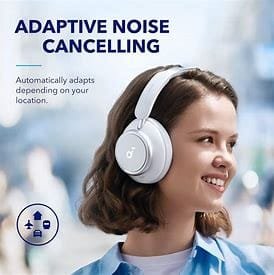
Another key benefit of ANC is its capacity to promote increased focus and productivity. In settings such as offices or public transport, the distracting sounds of chatter or machinery can hinder concentration. Earbuds with noise cancellation allow users to immerse themselves in their tasks, resulting in improved productivity levels. Many professionals have noted that incorporating ANC technology into their daily routines not only enhances their performance but also fosters a more efficient work environment.
Furthermore, the comfort of listening plays an essential role in user experience. Earbuds with noise cancellation often incorporate ergonomic designs that contribute to extended periods of use without discomfort. With reduced ambient noise, individuals can enjoy longer listening sessions without the need to raise the volume, thus preserving their auditory health. Some studies even suggest that using ANC technology may lower stress levels by minimizing exposure to disruptive sounds, which is a noteworthy health benefit.
The growing popularity of active noise canceling among consumers is indicative of these advantages. As more individuals and businesses implement ANC technology in various aspects of their lives, it becomes clear that the benefits extend beyond mere sound quality, marking it as a vital feature in today’s audio devices.
Challenges in ANC Technology
Active Noise Canceling (ANC) technology has revolutionized the audio experience, particularly with earbuds designed to enhance sound quality by mitigating external noise. However, despite its advantages, several challenges and limitations remain. One of the primary hurdles in ANC technology is the difficulty in canceling complex noise patterns. Unlike consistent, low-frequency sounds, such as the hum of an airplane engine, complex noise—like conversations or sudden environmental sounds—can pose significant challenges for ANC algorithms. These noises are less predictable, making it harder for the technology to analyze and counteract them effectively.
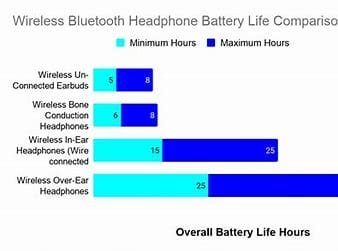
Another issue to consider is the impact of sound quality when using earbuds with noise cancellation features. While ANC can significantly reduce unwanted ambient sounds, it can also inadvertently affect the audio output of the earbuds. Users may notice alterations in sound fidelity as a result of the ANC processing, which can lead to a trade-off between noise reduction and audio clarity. Maintaining a high sound quality while implementing effective ANC remains a balancing act for manufacturers.
Battery life is another critical consideration for active devices employing noise-canceling technology. Earbuds with noise cancellation often consume more power to sustain their processing capabilities, which can lead to shorter usage times between charges. Users must be mindful of this aspect, especially those who rely on prolonged audio sessions. Furthermore, the production costs associated with advanced ANC technology can drive up the price of these earbuds, making them less accessible to a broader market.
Ongoing research in ANC technology aims to address these challenges. Innovations such as hybrid ANC systems and advancements in machine learning are being explored to improve performance in diverse noise environments while preserving audio integrity. As the technology evolves, solutions may emerge that enhance the user experience without compromising key performance metrics.
Future Trends in ANC Technology
As technology continues to evolve, the future of active noise canceling (ANC) technology presents exciting prospects for both consumers and manufacturers. One significant trend is the advancement of algorithms in ANC systems. These algorithms are becoming increasingly sophisticated, allowing for more precise cancellation of sound frequencies across a broader range. Future earbuds with noise cancellation will likely incorporate real-time adaptive algorithms capable of distinguishing between various noise sources, enhancing the user experience significantly. This will enable users to engage with their environment while still enjoying high-quality sound.
Another noteworthy trend is the application of machine learning to improve noise cancellation capabilities. Machine learning models can analyze user behavior and environmental sounds, enabling earbuds with ACN technology to tailor their performance according to specific user needs. For instance, as these systems learn from environmental patterns, they can adjust their noise-canceling features dynamically, providing an unparalleled experience. This personalized approach could lead to the development of the best earbuds with ANC technology, enhancing comfort and usability for everyday situations.
What is feedforward active noise canceling?
Feedforward ANC is, arguably, the simplest type of active noise cancelation. With feedforward technology, the noise-capturing microphones are placed on the outside of the headphones. This is pretty handy for ANC earbuds, where there is limited real estate for a mic inside the wearer’s ear.
Samsung Galaxy Buds Live earbuds are packed with sensors and vents.
- Includes 1 year limited manufacturer warranty
- THEY SAY “HOLA,” YOU HEAR “HELLO”: Now you can communicate freely with someone in another language; Use the Interpreter …
- PHONE TO EAR, TRANSLATIONS YOU HEAR: Phoning a relative back home or calling in reservations while traveling , break dow…
Feedforward ANC uses a digital signal processor (DSP) or dedicated ANC processing hardware to map the noise signal to what the user will hear on the inside of the headphones. However, it’s not as accurate as placing a mic inside the ear cup (something we’ve seen from premium headsets like the Bose QuietComfort 45 and Sony WH-1000XM4. Also, noise canceling properties change a bit between wearers. A loose fit, for example, may allow extra high-frequency noise to bleed through, which the processing can’t account for.
Placing the microphone outside the headphones has its share of pros and cons. The external microphone has the best noise sensitivity, making it good for mid-frequency noise canceling. As such, it can be used to isolate specific sounds, such as speech or traffic, for more advanced ANC and ambient sound control technologies. However, feedforward ANC is more sensitive to wind howl and other forms of incidental noise. These unpredictable noises may actually get amplified as they are not picked up inside the ear cup to be canceled out.
What is feedback active noise canceling?
- Natural and accurate reference sound that reveals the truth in your music
- Lifelike depth and realism from open-back earcups that allow sound waves to expand naturally, New polymer-blend transduc…
- Wide soundstage from ergonomic acoustic refinement (e.a.r.) that tilts the drivers to the natural angle of your ears
With feedback ANC, the microphone is located inside the ear cup or inside the wearer’s ear with earbuds. Picking the right place within the ear cup’s interior presents a new set of difficulties. The major benefit to feedback ANC is that noise captured by the microphone more accurately reflects the noise the wearer hears, regardless of the exact positioning and fit of the headphones. You can think of feedback ANC as a self-correcting mechanism. This also makes the headphones more resistant to wind howl, but devices can lose high-frequency noise canceling sensitivity, as less of this noise is likely to pass through the headphones from the outside.
This technology type still requires a processor to handle noise filtering. For instance, feedback noise canceling has to contend with the fact that the user’s audio (the wanted signal) is also likely to be captured by the internal microphone. This needs to be filtered out and corrected for the frequency profile of the headphones when they are worn.
The Sony WH-1000XM4 has an effective hybrid ANC system that uses both feedback and feedforward ANC.
- ACTIVE NOISE CANCELLATION: Premium noise canceling with Dual Noise Sensor technology
- LONG BATTERY LIFE: Up to 30-hour battery life with quick charging (10 min charge for 5 hours of playback)(USB Type-C Cab…
- TOUCH SENSOR CONTROLS: Pause play skip tracks, control volume, activate your voice assistant, and answer phone calls.
As with all feedback systems, runaway amplification can occur. There’s a small risk of the system picking up its own anti-noise signal and increasing the level of amplification in a bid to cancel it out; this can actually increase the amount of noise or even produce a ringing feedback sound. This is very rare but can happen in models that don’t take adequate precautions. There’s also less processing time with the feedback design, as it’s working on audio already very close to the ear. As such, feedback ANC is most effective at low frequencies, which have longer wavelengths.
What is hybrid active noise canceling?
Hybrid active noise cancelation offers the best of both worlds. As you may have guessed, it combines both feedforward and feedback microphones and processing to cover all the bases.
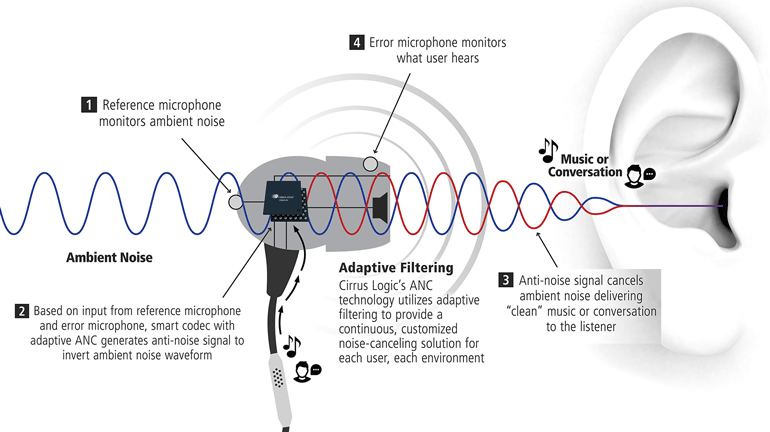
With hybrid technology, you’ll receive the best noise attenuation frequency coverage and the lowest chances of feedback issues. Furthermore, hybrid ANC can still be used for ambient noise and sound isolation features while retaining the benefits of accurate, tailored ANC.
The drawback is that hybrid ANC is more expensive. Not only are there two microphones but these microphones need to be of high quality to avoid introducing extra noise. Headphones also require more powerful dedicated processing hardware to handle the extra math. Developers also double up on all the frequency and performance testing to maximize noise canceling performance. These products make up the most expensive headphones on the market, but they offer the best quality ANC around.
Conclusion
Integration with other technologies is also on the horizon. Manufacturers are exploring the compatibility of ANC features with smart devices and personal assistants, creating a seamless interaction that could redefine user engagement. Imagine the ability to control noise cancellation through voice commands or by syncing your earbuds with a smart home system to automatically adjust ambient sounds based on your activities. Additionally, the potential fusion of ANC with virtual reality systems could create immersive experiences by blocking out real-world distractions entirely, allowing users to focus deeply on virtual environments. As we look ahead, it is evident that the future of active noise canceling technology holds immense promise, paving the way for unprecedented advancements and opportunities.
Active Noise Canceling (ANC) technology has revolutionized the way we experience sound in our daily lives. From commuting to work, traveling, or simply relaxing at home, the significance of having earbuds with noise cancellation cannot be overstated. This advanced technology works by utilizing built-in microphones and processors to identify external sounds and create sound waves that effectively cancel them out, leading to a more tranquil auditory environment.
Throughout this guide, we have explored various aspects of ANC technology, including how it operates, the different types available, and important considerations when selecting the best earbuds with ANC technology that suit personal preferences. With a wide variety of options on the market, consumers benefit from understanding the features that enhance comfort and sound quality, such as battery life and the level of noise reduction offered.
As technology continues to advance, the future of active noise canceling looks promising. Expectations are that improvements will lead to more effective algorithms, longer-lasting battery performance, and even more seamless integration with smart devices. This evolution reflects a growing demand for sound quality and acoustic environments, especially in increasingly noisy urban settings. Users seeking to enhance their listening experiences should actively explore the latest models of earbuds equipped with noise cancellation, which can profoundly impact enjoyment and concentration.
Understanding ANC and its benefits is essential in making informed decisions when it comes to audio accessories. By considering individual needs and circumstances, one can select products that not only reduce disruptive ambient noise but also improve overall well-being. Investing in quality earbuds with ANC technology is undoubtedly a step towards creating an improved acoustic environment conducive to both productivity and leisure.
Another key point to consider is that the noise you hear on the inside and outside of headphones is very different. Compare the passive isolation of closed-back headphones versus earbuds, for example. This difference in sound capture substantially changes the quality and capabilities of active noise cancelation between the two types of headsets. This begs the question: Where do you best position the microphone to capture and cancel out noise? Outside the headphones, inside, or perhaps a little bit of both works best?
Noise cancellation is generally not bad for your ears. In fact, it can be beneficial by protecting hearing through reduced exposure to loud ambient noise and allowing for lower listening volumes. For those with tinnitus, it can help manage symptoms. However, some people may experience side effects like dizziness or headaches, though these aren’t directly harmful to the ears. If you experience discomfort, try reducing ANC intensity or using less powerful noise-cancelling headphones.
Less effective than you want, most likely. Active Noise Cancellation (ANC) systems work best on droning sounds that are constant in frequency and intensity. Because quick, irregular sounds like music sounds and people talking are over with long before your headset can calculate how to cancel them, the only noise attenuation your ANC headset will offer against annoying coworkers/TV noise is simply what sound they can physically block out.
Yes. If you use different earpads on your headphones, you can alter the performance of the isolation quite considerably. Namely, pads will often use different materials that can change how well they fit your head, or they may be able to physically block outside noise better. If you want better noise attenuation performance from your headphones, pads may be a way to ensure a better fit—and, thus, better performance.
No feature is without its cost, and ANC often means a drain on battery life, higher cost of products, and a more difficult time hearing important cues in the world around you.
From Wikipedia, the free encyclopedia

^ The average head is about 21.5 cm (8.5 in) from ear to ear. Assuming the speed of sound is 343 meters per second (1125 feet per second), the full wavelength of a tone of 1600 Hz reaches from ear to ear. A tone of half that frequency, 800 Hz, has a wavelength twice as long. A single such tone coming from the side will appear at the two ears 180 degrees out of phase—one ear compared to the other. An active noise control tone coming from a different angle will not be able to attenuate the original tone in both ears at once.
- ^ Moylan, William (2006). Understanding and crafting the mix: the art of recording. Focal Press. p. 26. ISBN 0-240-80755-3.
- ^ “Active Noise Control” (PDF). medialab. December 2005. Archived from the original (PDF) on April 26, 2012.
- ^ a b Urquhart, Ryan L. (24 April 2002). “Evaluation of an Improved Active Noise Reduction Microphone using Speech Intelligibility and Performance-Based Testing, n.d.” (PDF). hdl:10919/27111. Archived from the original on 2015-10-26. Retrieved 2020-09-23.
